ЙњУёВЪЦБ finalists announced in 2020 Eureka Prizes
ЙњУёВЪЦБ Sydney celebrates seven finalists heralded in the тOscars of scienceт.
ЙњУёВЪЦБ Sydney celebrates seven finalists heralded in the тOscars of scienceт.
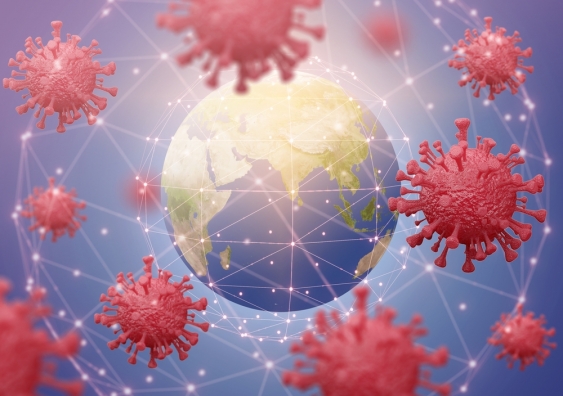
Developing a blueprint for any respiratory pandemic, using virtual reality technology to view cancer cells and creating ways to protect native mammals from predators are among the ЙњУёВЪЦБ Sydney projects nominated for the 2020 Australian Museum Eureka Prizes, Australia's most high-profile science awards.
Presented annually by the Australian Museum, 17 Australian Museum Eureka Prizes are awarded across four categories including research and innovation, leadership, science engagement and school science.
Seven ЙњУёВЪЦБ Sydney researchers have been named as finalists for their outstanding achievements in the fields of leadership, research and innovation.
The ЙњУёВЪЦБ finalists are:
Professor Gregory Dore, The Kirby Institute at ЙњУёВЪЦБ
Australian Infectious Diseases Research Centre Eureka Prize for Infectious Diseases Research
Prof. Doreтs research on antiviral therapy for hepatitis C virus (HCV) infection in people who use drugs is having a major impact on elimination of the disease in Australia.
тHepatitis C virus is a major global health challenge. Ь§Direct-acting antiviral therapy for HCV has been successful, however the group most impacted by the disease, people who use drugs, has been largely excluded from accessing it. This is due to perceived likely poor adherence and risk of HCV reinfection,т Prof. Dore said.
Prof. Dore has led several clinical trials of direct-acting antiviral therapy evaluation on people who inject drugs. The key benefit of his research is that it has driven equitable provision of the antiviral to this group of people in Australia, which is crucial for HCV elimination efforts.
Prof. Doreтs research findings have been included in major international HCV management guidelines and have driven advocacy to enable people who inject drugs to access the antiviral therapy. His research has impacted the attitudes and practices of many clinicians involved in HCV management, evident through increased antiviral treatment in this group.
тAustralia is an international leader in HCV elimination. The evidence of HCV elimination progress for people who inject drugs and the broader Australian HCV population through a community-centred approach is crucial to driving enhanced investment and strategy development for global HCV elimination,т Prof. Dore said.
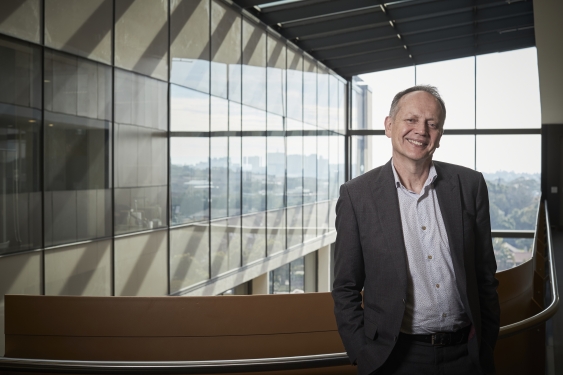
Professor Gregory Dore.
Professor Maria Kavallaris AM,Ь§Childrenтs Cancer Institute and ЙњУёВЪЦБ Medicine
CSIRO Eureka Prize for Leadership in Innovation and Science
Professor Kavallaris is internationally renowned for her leadership, research and advocacy in the treatment of childhood cancer.Ь§
Prof. Kavallaris is a Director of the Australian Centre for NanoMedicine at ЙњУёВЪЦБ and Head of the Translational Cancer Nanomedicine Theme and NHMRC Principal Research Fellow at the Childrenтs Cancer Institute.Ь§ She has made important discoveries in relation to the mechanisms of clinical drug resistance and tumour aggressiveness in childhood cancer.Ь§
тTo be able to make a difference to the lives of children with cancer and their families by developing better treatments and improving survival rates is very humbling. Even if you can save one childтs life, thatтs an incredible feat,т Professor Kavallaris said.Ь§
How cancer cells become resistant to chemotherapeutic drugs is a key aspect of Prof. Kavallarisт research. One of her most significant discoveries was identifying specific genetic changes in tumour cells that make them resistant to chemotherapy, and developing a means of targeting these genetic changes and reversing the drug resistance.Ь§
Prof. Kavallaris is also recognised as an Australian pioneer in the medical application of nanotechnology and has had significant success finding ways to package and deliver chemotherapy drugs in nanostructures that specifically target tumour cells. This approach not only aims to improve drug efficacy but also drug safety, minimising harmful effects on healthy tissues т a particularly important consideration in growing children.
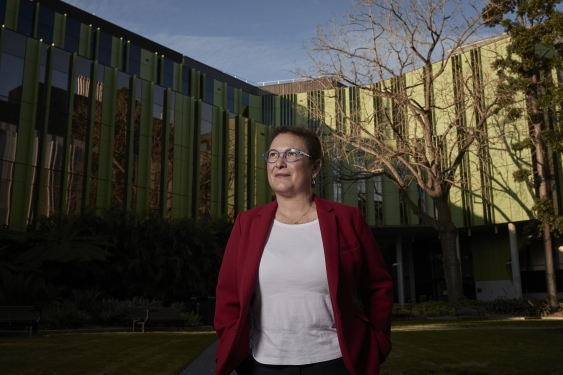
Professor Maria Kavallaris AM.
Professor Raina MacIntyre, The Kirby Institute at ЙњУёВЪЦБ and Associate Professor David Heslop, ЙњУёВЪЦБ Medicine
Department of Defence Eureka Prize for Outstanding Science in Safeguarding Australia
Prof. MacIntyre and A/Prof. Heslop lead ЙњУёВЪЦБ Biodefense, a research program in health security.Ь§ They developed a blueprint for pandemic preparedness prior to the COVID-19 pandemic. Underpinned by mathematical modelling and published research, this work provides a concrete, actionable blueprint relevant to any respiratory pandemic.
They predicted much of what has occurred with COVID-19, including recognition of a new disease epidemic, diagnostic challenges, health systems surge capacity, mass contact tracing and quarantine, mass case finding and isolation, personal protective equipment and vaccine shortages, health workforce vulnerabilities, national interest in conflict with global pandemic control, infected cruise ships in international waters, travel bans and more.
тThe white paper and pandemic response blueprint resulted from an exercise called тExercise Mataikaт that was held at ЙњУёВЪЦБ Sydney and used the hypothetical scenario of a smallpox attack in the Pacific which becomes a pandemic, to examine our local, regional and global preparedness to a respiratory transmissible pathogen,т Prof. MacIntyre said.
ЙњУёВЪЦБ Biodefense simulated the duration and magnitude of the pandemic under different scenarios, identified the critical threshold for epidemic control, and scenarios where the World Health Organization vaccine stockpile is inadequate, and a worst-case scenario. The blueprint provides a guide to avoiding a worst-case scenario. The time to commence the response, rates of contact tracing and ring vaccination, and rates of case identification (testing) and isolation are all influential factors in pandemic control.
тWe have been able to outline very clear disease control targets in terms of vaccination and isolation of sick people. For national interest, efforts must be directed to the areas that are worst affected. There may be catastrophic consequences of ignoring poor epidemic control outside our borders or withholding resources. We have since modified the model for COVID-19 and the same findings apply, including for future COVID-19 vaccines,т A/Prof. Heslop said.
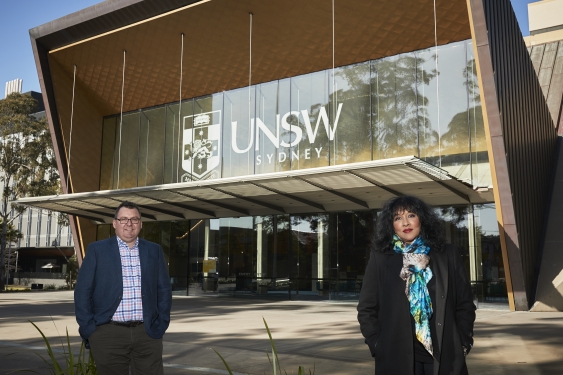
Associate Professor David Heslop and Professor Raina MacIntyre.
Associate Professor John McGhee, ЙњУёВЪЦБЬ§Art & Design, ЙњУёВЪЦБ in collaboration with a team from University of Queensland and Monash University
ANSTO Eureka Prize for Innovative Use of Technology
A/Prof. McGhee is part of a team that has created a virtual reality exploration platform for cancer data called BioNanoVR. The technology helps scientists and patients visualise complex information and medical data in a form that is easy to understand.
тOur virtual reality experience offers the unique experience of understanding what happens once a nanoparticle reaches the surface of a cancer cell. This approach is the first of its kind and promises new insight into how to better understand and subsequently develop new nanotherapeutics,т A/Prof. McGhee said.
The team includes researchers from diverse fields: cell biologists using state-of-the-art microscopy, experts in nanomedicine, and experts in 3D computer visualisation and virtual reality design. The project combines several cutting-edge technologies that have not previously been used together.
тThe virtual reality models help students and researchers gain a better understanding of cell biology, and how drugs distribute throughout the body. They also help researchers understand how to improve nanoparticle-based drug delivery,т A/Prof. McGhee said.
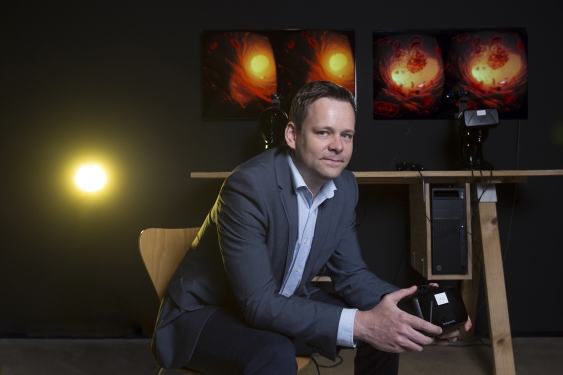
Associate Professor John McGhee.
Dr Katherine Moseby and Professor Mike Letnic, ЙњУёВЪЦБ Science, in collaboration with a team from University of California, Arid Recovery and Bush Heritage Australia
NSW Environment, Energy and Science (DPIE) Eureka Prize for Applied Environmental Research
A team led by Dr Moseby from ЙњУёВЪЦБ Science has established a predator training method for native mammals who are at risk of extinction. The team aims to improve the conservation of native species through innovative techniques and large-scale field experiments.
тAustralia has the worst mammal extinction rate in the world with one of the leading causes of extinction being predation from introduced predators such as cats and foxes. Our native mammals have not co-evolved with these species and donтt have the necessary anti-predator traits to avoid predation,т Dr Moseby said.
The team has addressed prey naivety by developing and trialling a novel method called in situ predator training. Native mammals are exposed to low densities of feral cats over long time periods in the wild to improve behaviour and accelerate natural selection for anti-predator traits.
тWe are using real predators so native mammals, such as burrowing bettongs and bilbies, are exposed to real-life predation attempts,т Dr Moseby said.
тThe mammals are placed in large landscape scale enclosures with predators for up to six years. We have recorded significant changes in anti-predator behaviour and physical traits compared with a control population that is not exposed to predators.т
Co-investigator Prof. Mike Letnic from ЙњУёВЪЦБ Science added, тImportantly, we have also found increased survival in species such as the bilby after being pre-exposed to feral cats.т
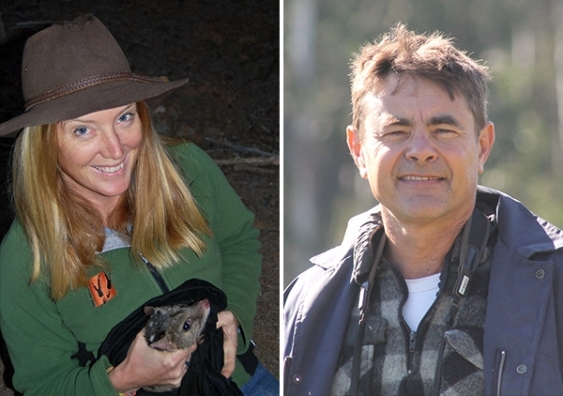
Dr Katherine Moseby and Professor Mike Letnic.
Ь§